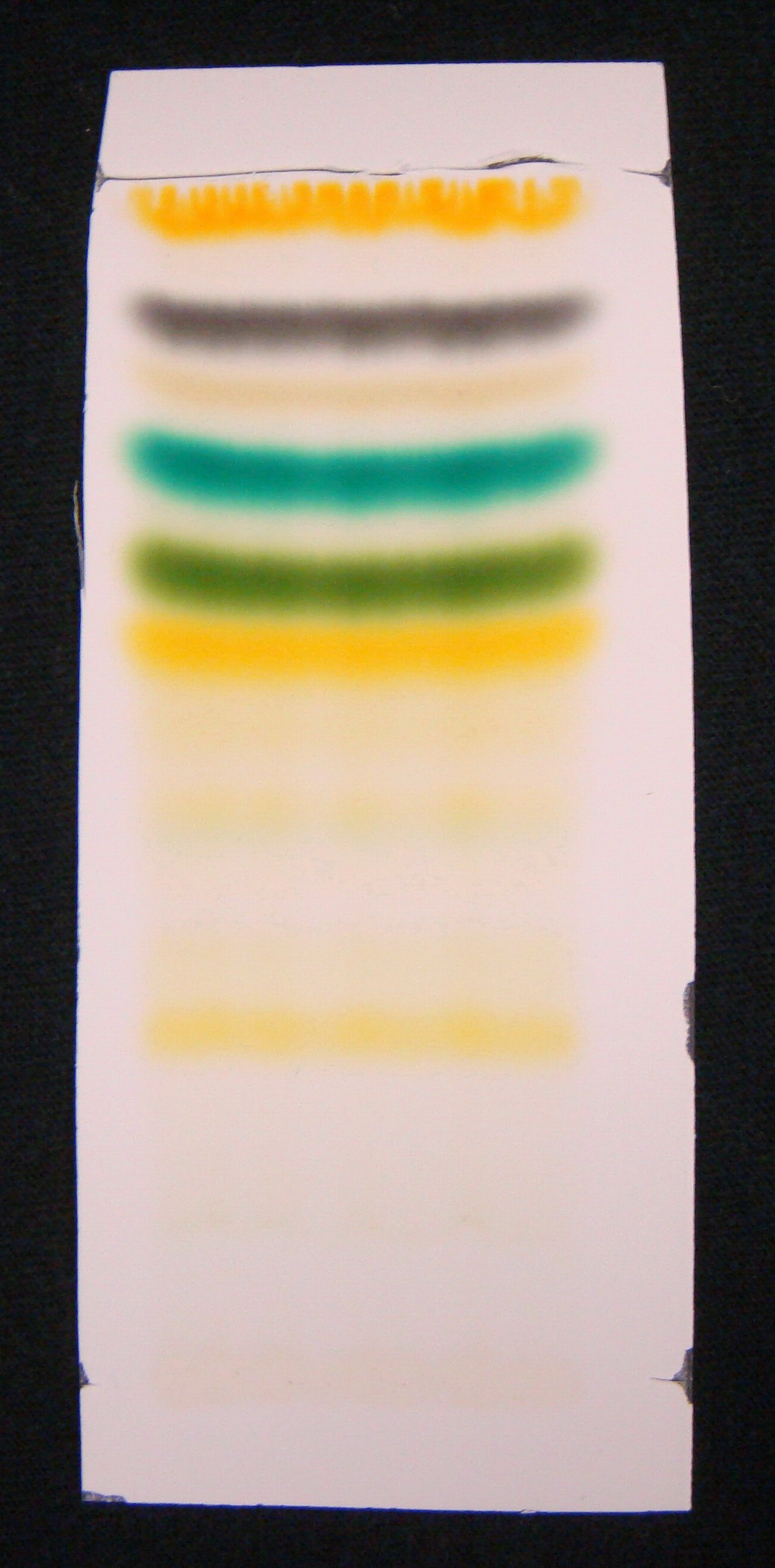
The mixture of pigments should be applied to the silica gel in a very thin line, so that the pigments separate into distinct bands that do not overlap as they migrate up the plate. The thinner the line, the better the separation will be. At the same time, it is important to apply enough sample so that as the pigment bands separate from each other they donít become too faint. Unfortunately, if a large amount of sample is applied all at once, it will spread over a large part of the plate, producing a thick line. Therefore, in order to get a thin, yet heavy, sample line at the origin, the sample should be applied in multiple, small applications, allowing the sample to dry thoroughly between each application.
After the pigment sample has been applied to the silica gel, the chromatography plate will be placed in a jar with developing solution. The level of the developing solution should be a couple of mm below the lowest part of the pigment line. If the pigment becomes immersed in the developing solution, it will dissolve in the developing solution at the bottom of the jar, rather than be carried up through the silica gel. Once the chromatography plate is resting at the bottom of the jar, the cover should be tightly closed. It is important to keep your chromatography jar tightly sealed, for two reasons. First, the organic solvents used in the mobile phase are highly volatile and will rapidly evaporate when the chamber is open. The exact ratio of solvents in this mixture is very important to the successful separation of pigments, and if one solvent evaporates faster than the others, the ratio will change. Second, volatile organic solvents tend to be unhealthy, and breathing these vapors should be avoided. For this reason, containers with developing solution should ALWAYS remain inside the fume hood.
pigments using TLC
As the pigments are carried up through the silica gel by the developing solution, they will also be diffusing into a wider and wider band over time. To minimize this spreading of the pigment bands, the chromatography should be terminated as soon as the solvent front approaches the end of the chromatography plate. When removing the plate from the chamber, however, be aware that the solvents will dry rapidly, so it is important to mark the solvent front as soon as you open the jar. Once the solvents have dried, the solvent front will be invisible.